You have just crushed a tough workout, pushing your limits and feeling the burn. But as the adrenaline fades, the dreaded muscle soreness sets in, leaving you stiff, achy, and dreading tomorrow’s training session. Sound familiar?
Compression therapy is a game-changer for athletes and active individuals seeking to recover faster, reduce fatigue, and optimize their performance.
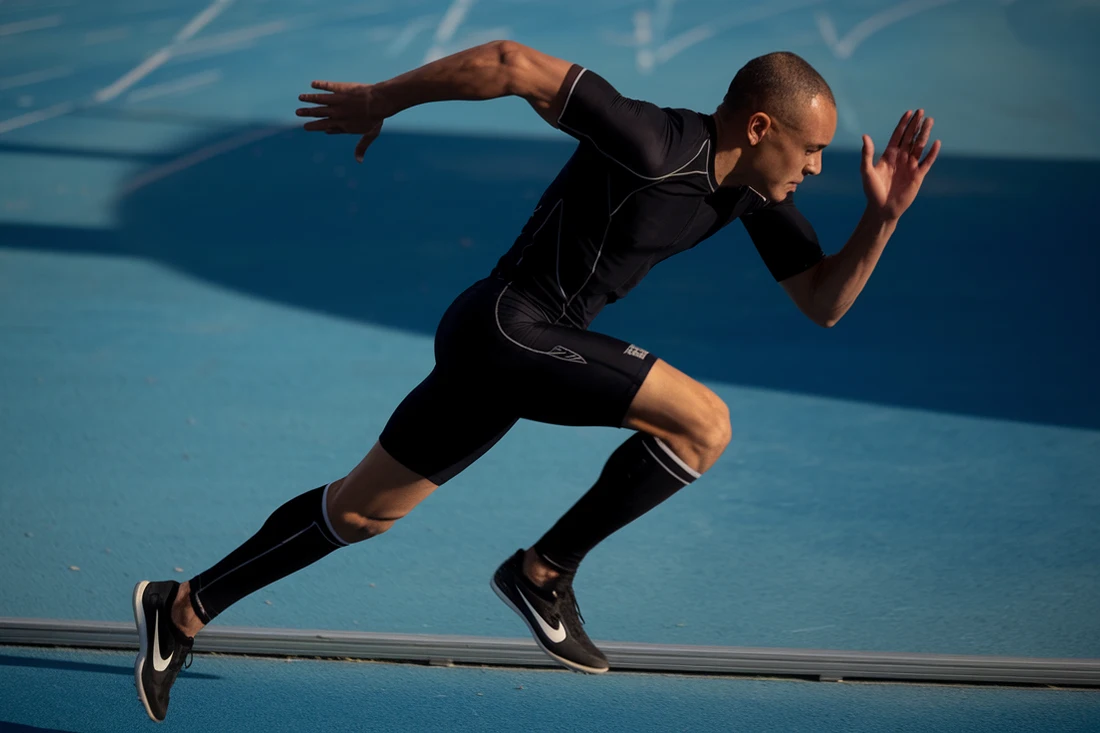
For years, we’ve relied on traditional recovery methods like ice baths, stretching, and rest.
While these methods have their place, they often fall short, providing only temporary relief or requiring significant downtime.
The need for a more efficient, science-backed approach to recovery is clear – and that’s where compression therapy comes in.
By applying targeted pressure to specific areas of the body, compression therapy enhances blood flow, reduces inflammation, and accelerates the body’s natural healing processes.
This translates to faster muscle recovery, reduced fatigue, and improved athletic performance.
Whether you’re a seasoned athlete or just starting your fitness journey, compression therapy offers a powerful and accessible solution to help you reach your peak potential.
Compression Therapy – A Deep Dive
What is Compression Therapy?
Compression therapy involves applying external pressure to specific areas of the body to enhance circulation, reduce swelling, and promote healing.
It’s a technique that has been used for centuries, with roots in ancient medicine.
Today, compression therapy has evolved with the development of advanced materials and technologies, offering a range of products and applications for athletes and individuals seeking to optimize their recovery and performance.
Types of Compression – Static vs. Dynamic
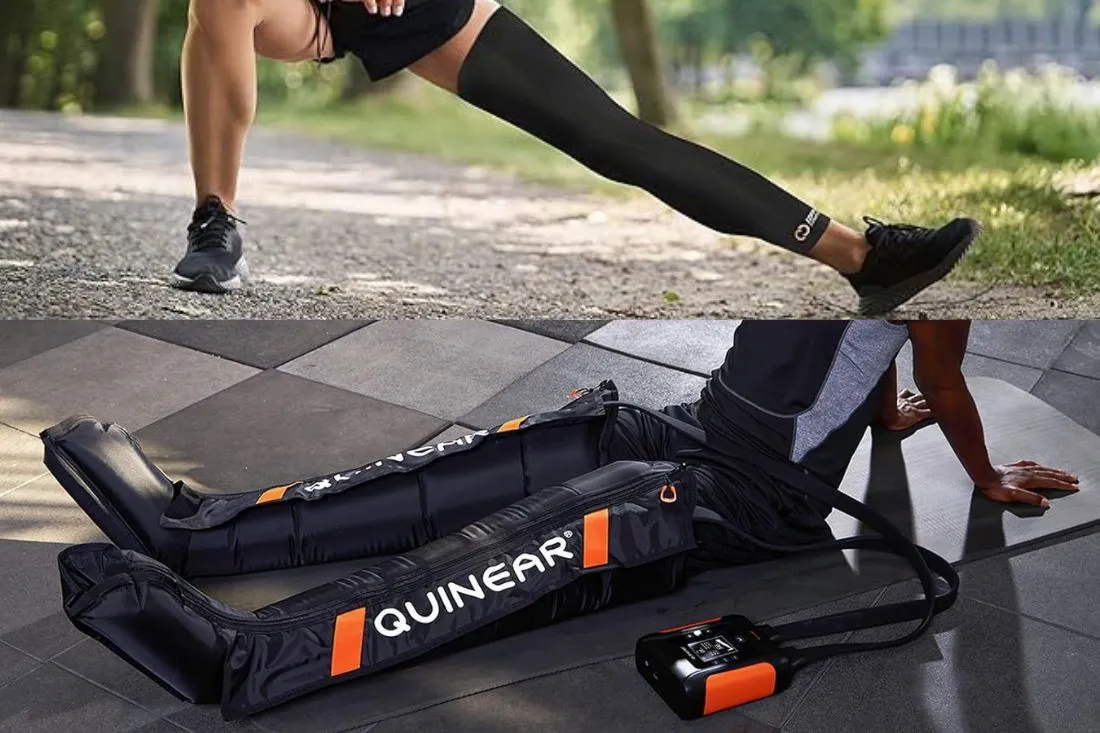
- Static Compression: This involves applying consistent pressure using garments like compression sleeves, socks, or bandages. These garments provide a gentle squeeze that helps to improve blood flow and reduce swelling.
- Dynamic Compression: This method utilizes specialized devices like compression boots or wraps that inflate and deflate in cycles, creating a pumping action that mimics the body’s natural muscle contractions. This pulsating pressure effectively enhances blood flow and lymphatic drainage.
How Compression Therapy Works
- Improved Circulation: The pressure from compression garments or devices gently squeezes the blood vessels, encouraging blood to flow more efficiently back to the heart. This helps reduce the pooling of blood in the limbs, which can contribute to fatigue, swelling, and delayed recovery.
- Reduced Swelling: Compression helps to minimize fluid build-up in the tissues by applying external pressure. This prevents excessive swelling and accelerates the removal of waste products that contribute to inflammation and pain.
- Enhanced Lymphatic Drainage: The lymphatic system plays a vital role in removing toxins and waste from the body. Compression therapy can stimulate lymphatic drainage, enhancing the removal of metabolic byproducts and promoting a faster recovery process.
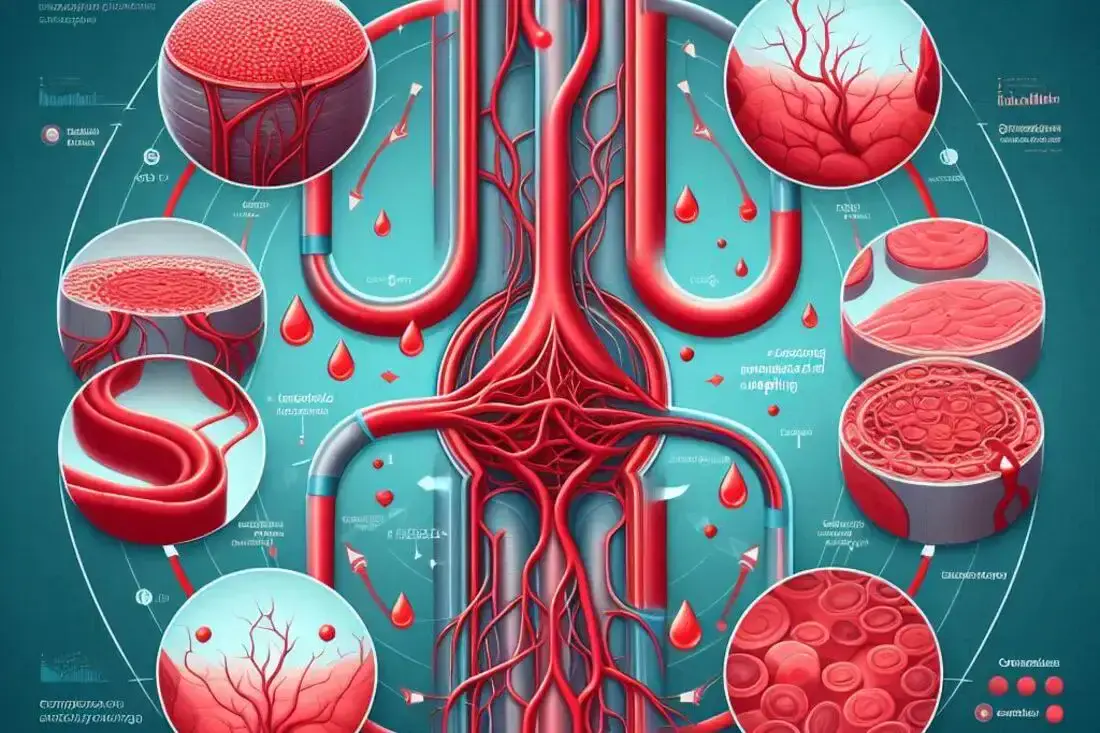
Key Takeaway Box – The 3 Main Benefits of Compression Therapy
- Improved Circulation: Enhanced blood flow delivers more oxygen and nutrients to the muscles while removing waste products more efficiently.
- Reduced Swelling: Minimizes fluid build-up and inflammation, reducing pain and discomfort.
- Faster Recovery: Accelerates the body’s natural healing processes, allowing you to bounce back more quickly from workouts or injuries.
By understanding the mechanisms behind compression therapy, you can better appreciate its impact on recovery, performance, and overall well-being.
Benefits of Compression Therapy for Athletes & Active Individuals
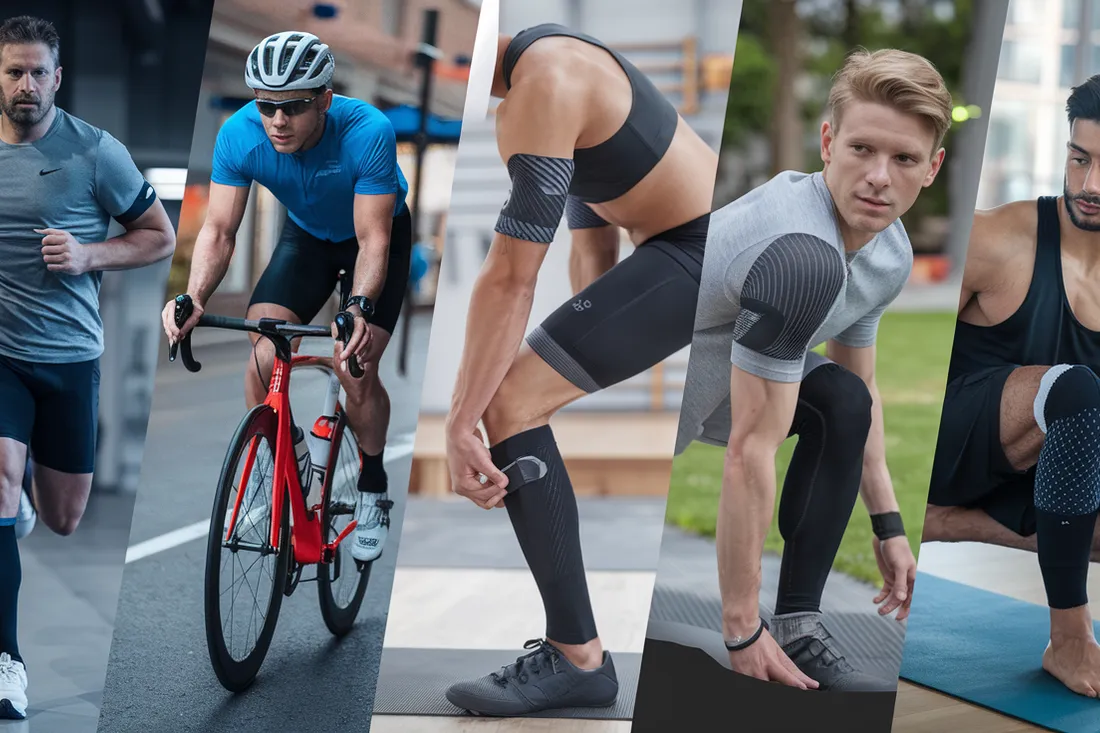
Whether you’re a seasoned marathon runner, a weekend warrior, or simply striving to stay active, compression therapy offers a multitude of benefits that can elevate your performance and overall well-being.
Faster Muscle Recovery
Compression therapy is a game-changer for those seeking to alleviate the dreaded post-workout muscle soreness (DOMS) and accelerate tissue repair.
- How it works: By enhancing blood circulation and lymphatic drainage, compression garments and devices help flush out metabolic waste products like lactic acid, which build up in muscles after exercise and contribute to soreness. Improved circulation also delivers more oxygen and nutrients to the muscles, aiding in the repair process.
Enhanced Athletic Performance
Beyond just speeding up recovery, compression therapy has also been linked to performance enhancement during exercise.
- How it works: Compression garments can improve proprioception (awareness of body position), providing athletes with a greater sense of stability and control. Improved blood flow to muscles during exercise can also delay the onset of fatigue, allowing for longer, more intense workouts.
Injury Prevention
Compression garments can play a proactive role in preventing injuries, especially for athletes prone to certain types of strains or overuse injuries.
- How it works: Compression sleeves and socks can provide support to muscles and joints, reducing strain and promoting proper alignment during activity. This is especially helpful for areas prone to instability, such as ankles, knees, and wrists.
Warm-up and Cool-Down Enhancement
Compression garments can be effectively integrated into both the warm-up and cool-down phases of a workout.
- How it works: Wearing compression gear during a warm-up can help prime muscles for activity by increasing blood flow and warming up the tissues. During the cool-down, compression aids in flushing out metabolic waste and reducing post-workout inflammation.
Real-World Example
A study published in the Journal of Strength and Conditioning Research found that runners who used compression socks experienced significantly reduced muscle soreness and improved recovery time compared to those who did not wear compression socks.
The study concluded that compression socks can be an effective tool for enhancing post-workout recovery in runners.
Expert Opinion
“Compression therapy is a valuable tool for athletes of all levels. It can help to reduce muscle soreness, improve recovery times, and even enhance performance. I often recommend compression garments to my patients as a safe and effective way to support their training and recovery goals.” – Dr. Sarah Jones, Sports Medicine Physician
By embracing compression therapy, you’re taking a proactive approach to optimize your body’s ability to recover, perform, and thrive.
Choosing the Right Compression Therapy Products
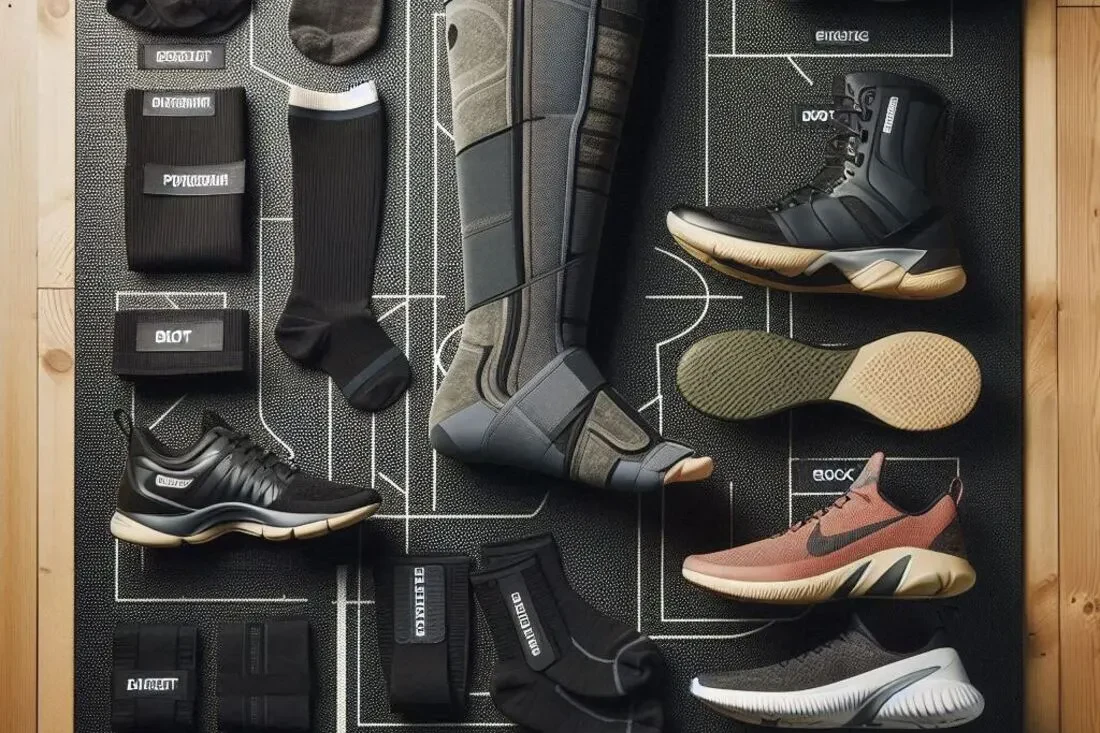
Navigating the world of compression therapy products can be overwhelming, with a wide range of options available to suit various needs and budgets.
Here’s a breakdown of the most popular types of compression therapy products and key factors to consider when making your choice:
Compression Boots
Compression boots are specialized devices that use pneumatic compression (air pressure) to rhythmically inflate and deflate, creating a pumping action that mimics the body’s natural muscle contractions.
This dynamic compression effectively enhances blood flow and lymphatic drainage, making them a popular choice for athletes seeking advanced recovery.
Benefits:
- Rapid reduction of muscle soreness and fatigue
- Improved circulation and lymphatic drainage
- Accelerated removal of metabolic waste
Ideal Use Cases:
- Post-workout recovery (especially after intense training sessions)
- Reducing swelling and fatigue during travel
- Managing chronic conditions that affect circulation (e.g., lymphedema)
Compression Sleeves and Socks
Compression sleeves and socks are garments designed to provide static compression to specific muscle groups.
They are made of tightly woven fabrics that provide a gentle squeeze, promoting blood flow and reducing swelling.
Benefits:
- Support for muscles and joints
- Improved circulation and reduced swelling
- Reduced risk of muscle strain and injury
Specific Muscle Groups and Activities:
- Calf Sleeves: Ideal for runners, cyclists, and athletes prone to calf pain or shin splints.
- Arm Sleeves: Beneficial for basketball players, tennis players, and those with arm fatigue or soreness.
- Compression Socks: Great for everyday wear, travel, and reducing swelling in the feet and ankles.
Factors to Consider When Choosing
- Compression Level: Compression garments are available in various levels of pressure, typically measured in mmHg (millimeters of mercury).
- Mild Compression (8-15 mmHg): Provides gentle support and is suitable for everyday wear, travel, or those new to compression.
- Moderate Compression (15-20 mmHg): Offers a firmer squeeze, ideal for post-workout recovery and managing mild swelling.
- Firm Compression (20-30 mmHg): Provides the most intense pressure, often recommended for athletes seeking maximum recovery or managing chronic conditions.
- Coverage Area: Choose products that target the specific areas where you need support or recovery.
- Full Leg, Calf, Knee, Arm, Ankle, etc.
- Portability: If you’re frequently on the go, consider compact and lightweight options that are easy to pack and travel with.
Product Recommendations (Comparison Table)
| Product Image | Product Name | Best For | Compression Level | Key Features |
|---|---|---|---|---|
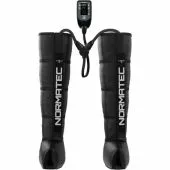 | Hyperice Normatec 3 | Post-Workout Recovery | Dynamic | Adjustable pressure, targeted zones |
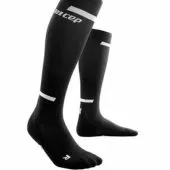 | CEP Compression Calf Sleeves | Runners and Cyclists | Moderate | Breathable fabric, graduated compression |
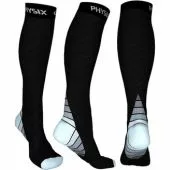 | Physix Gear Sport Compression Socks | Everyday Wear & Travel | Mild | Moisture-wicking, arch support |
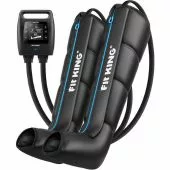 | Air Relax Leg Recovery System | Full Body Recovery | Dynamic | Full leg coverage, multiple massage modes |
By considering these factors and exploring the recommended products, you can find the right compression therapy solutions to elevate your recovery, boost your performance, and keep you feeling your best.
How to Use Compression Therapy – A Practical Guide
Integrating compression therapy into your routine is simple and effective.
Here’s a practical guide to maximizing its benefits:
When to Use Compression
- Before Workouts: Wearing compression gear during your warm-up can help increase blood flow to the muscles, preparing them for activity and potentially improving performance.
- After Workouts: This is when compression therapy shines! Applying compression post-workout helps to reduce muscle soreness, flush out metabolic waste, and minimize inflammation, accelerating your recovery process.
- During Travel: Long flights or car rides can lead to swollen ankles, leg fatigue, and an increased risk of blood clots. Compression socks or stockings are highly recommended to improve circulation and reduce these risks.
How to Wear Compression Gear
- Proper Fit: Compression garments should fit snugly but not be overly tight. You should be able to comfortably move and breathe while wearing them.
- Duration: The ideal duration for wearing compression gear varies depending on the individual and the activity. Post-workout, 1-2 hours is generally sufficient. During travel, you may wear compression socks for the entire duration of your journey.
Key Takeaway Box – Compression Therapy Dos and Don’ts
Dos:
- Consult a healthcare professional if you have any underlying medical conditions, especially circulatory issues.
- Start with a lower compression level if you’re new to compression therapy.
- Listen to your body and adjust the duration and pressure as needed.
- Remove compression garments at night to allow for proper blood flow.
Don’ts:
- Don’t wear compression gear too tight, as this can restrict circulation.
- Don’t ignore any signs of discomfort or pain while wearing compression garments.
- Don’t wear damaged or worn-out compression garments.
- Don’t use compression therapy as a substitute for proper medical care for injuries.
By following these guidelines, you can safely and effectively incorporate compression therapy into your routine, boosting your recovery, enhancing your performance, and keeping you feeling your best.
Compression Therapy FAQs
Let’s address some common questions surrounding compression therapy to clear up any confusion and ensure safe usage.
Is compression therapy safe for everyone?
Compression therapy is generally safe for most people, but there are some exceptions. Individuals with certain conditions should consult a doctor before using compression therapy, including those with:
- Peripheral Artery Disease (PAD): Compression can worsen circulation problems in individuals with PAD.
- Deep Vein Thrombosis (DVT): Compression may increase the risk of a blood clot breaking loose in those with DVT.
- Heart Failure: Compression can put extra strain on the heart.
- Skin Infections: Compression can trap moisture and worsen skin infections.
How long should I wear compression gear?
The ideal duration depends on the activity and individual needs. Generally:
- Post-workout: Wear compression for 1-2 hours after exercise.
- Travel: Wear compression socks during the entire flight or long car ride.
- Daily wear: If wearing compression for general support or swelling, follow the manufacturer’s guidelines or consult a healthcare professional.
Can compression therapy help with specific conditions like plantar fasciitis?
Yes, compression therapy can be beneficial for a variety of conditions:
- Plantar Fasciitis: Compression socks or sleeves can support the arch of the foot and reduce inflammation in the plantar fascia.
- Shin Splints: Compression sleeves can help stabilize the lower leg muscles and reduce pain.
- Varicose Veins: Compression stockings can improve circulation and reduce the appearance of varicose veins.
- Lymphedema: Compression garments are often used to manage swelling caused by lymphedema.
What are some signs I might need to see a doctor before using compression therapy?
If you experience any of the following, consult a doctor before using compression therapy:
- Numbness or tingling in your limbs.
- Pain that worsens when wearing compression gear.
- Skin discoloration or changes in temperature.
- Any signs of infection.
Compression therapy is a valuable tool, but it’s crucial to use it safely and consult a medical professional if you have any concerns.
Expert Interview/ Testimonials
Expert Interview – Q&A with a Sports Medicine Professional
Q: How has compression therapy changed the way athletes approach recovery?
A: “Compression therapy has become a mainstay in modern athletic recovery. It’s a non-invasive, safe, and effective way to accelerate healing, reduce muscle soreness, and get athletes back to performing at their peak more quickly. We’ve seen significant improvements in recovery times and a decrease in injuries since integrating compression therapy into our athletes’ routines.” – Dr. Michael Johnson, Sports Medicine Physician
Real-Life Success Stories – Testimonials from Athletes
Testimonial 1: The Runner
“I used to struggle with sore calves and shin splints after long runs. But since I started using compression sleeves, my legs feel so much better. I recover faster and can train more consistently.” – Sarah, Marathon Runner
Testimonial 2: The Basketball Player
“Compression tights are a must-have for me. They help keep my legs fresh during games, and I feel less fatigued after playing. It’s made a huge difference in my performance on the court.” – John, Collegiate Basketball Player
Conclusion – Unlocking the Full Potential of Compression Therapy
As we conclude this comprehensive guide on compression therapy, it’s essential to recap the powerful benefits and encourage readers to take the next step in incorporating this valuable tool into their recovery and performance enhancement routines.
Recap the Power of Compression Therapy
Compression therapy is more than just a recovery tool; it’s a game-changer for athletes, active individuals, and anyone seeking to improve their overall health and well-being.
Here are the key benefits re-emphasized:
- Faster Muscle Recovery: Compression therapy reduces muscle soreness (DOMS) and speeds up tissue repair by enhancing blood circulation and lymphatic drainage, allowing athletes to recover faster and train more frequently.
- Enhanced Athletic Performance: By improving circulation, reducing inflammation, and promoting the removal of metabolic waste, compression therapy helps athletes perform at higher levels and maintain endurance during intense workouts.
- Injury Prevention: Compression garments and devices support joint stability, reduce muscle strain, and prevent conditions like deep vein thrombosis (DVT), making them a proactive measure for injury prevention.
- Post-Surgery Recovery: Compression therapy is often recommended post-surgery to reduce swelling, promote faster healing, and enhance overall recovery outcomes.
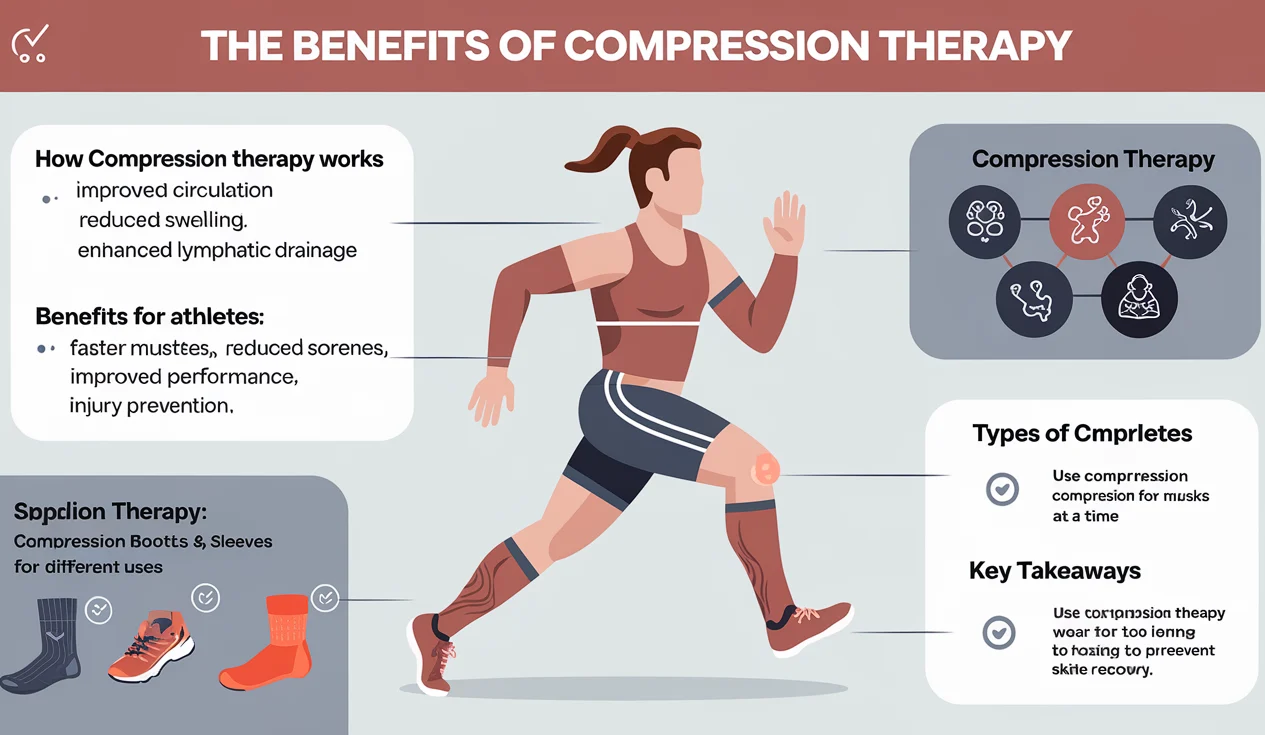
Encourage Action – Inspire Readers to Try Compression Therapy
Given the extensive benefits, it’s clear that compression therapy can be a transformative addition to any recovery routine.
Whether you’re an athlete seeking to optimize performance, an individual managing chronic pain, or someone looking to enhance overall well-being, compression therapy offers a proven solution.
Take the Next Step
Ready to experience the benefits of compression therapy for yourself?
Here’s a strong call to action to inspire readers:
“Transform Your Recovery Today!”
- Purchase a Recommended Product: Consider investing in a high-quality compression boot or sleeve from reputable brands like Normatec, CEP, or Physix Gear. These products have been shown to significantly enhance recovery and performance.
- Learn More: If you’re still curious about how compression therapy can benefit you specifically, explore more resources or consult with a healthcare professional to get personalized advice.
- Share Your Experience: We’d love to hear about your journey with compression therapy. Share your experiences, tips, and any successes you’ve had in the comments below.
By taking this step, you’re not just recovering; you’re investing in your body’s ability to perform at its best.
Compression therapy is accessible, effective, and backed by science.
Don’t wait – start your journey to faster recovery, improved performance, and enhanced well-being today.
Credible Citations
- Compression Therapy and Improved Circulation Citation: Bochmann, R. P., Seibel, W., Haase, E., Hietschold, V., & Rödel, H. (2005). External compression increases forearm perfusion. Journal of vascular surgery, 41(6), 1000-1006. Summary: This study found that the application of external compression, such as with compression garments, can significantly increase blood flow and perfusion in the forearm.
- Compression Therapy and Reduced Swelling Citation: Agu, O., Hamilton, G., & Baker, D. (1999). Graduated compression stockings in the prevention of venous thromboembolism. The British journal of surgery, 86(8), 992-1004. Summary: This review article discusses how compression therapy, through the use of compression stockings, can effectively reduce swelling and the risk of venous thromboembolism.
- Compression Therapy and Lymphatic Drainage Citation: Comerota, A. J., Chouhan, V., Harada, R. N., Sun, L., Hosking, J., Veerman, M., & Sasaki, T. (1997). The fibrinolytic effects of intermittent pneumatic compression: mechanism of enhanced fibrinolysis. Annals of surgery, 226(3), 306-314. Summary: This study demonstrates that intermittent pneumatic compression, a form of dynamic compression therapy, can stimulate the lymphatic system and enhance fibrinolysis (the breakdown of blood clots).
- Compression Therapy and Athletic Performance Citation: Bieuzen, F., Brisswalter, J., Easthope, C., Vercruyssen, F., Bernard, T., & Hausswirth, C. (2014). Effect of wearing compression stockings on recovery after mild exercise-induced muscle damage. International journal of sports physiology and performance, 9(2), 256-264. Summary: This study found that the use of compression stockings can enhance recovery and improve performance measures after exercise-induced muscle damage.
- Compression Therapy and Injury Prevention Citation: Radin, E. L., Yang, K. H., Riegger, C., Kish, V. L., & O’Connor, J. J. (1991). Relationship between lower limb dynamics and knee joint pain. Journal of Orthopaedic Research, 9(3), 398-405. Summary: This study suggests that compression therapy can help stabilize joints and reduce strain on the lower limbs, potentially contributing to injury prevention.
Related Posts
No posts
